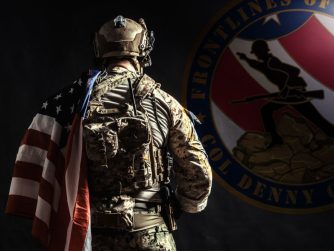On the evening of 5 Mar 1770, a mob of colonists gathered at the Customs House in Boston and began taunting the British soldiers guarding the building. The protesters, who called themselves Patriots, were protesting the occupation of their city by British troops, who were sent to Boston in 1768 to enforce unpopular taxes passed by parliament.
Here’s the rest of the story. The British commanding officer ordered his men to fix their bayonets and join the guard outside the building. The colonists responded by throwing snowballs and other things at the troops, and one Private Hugh Montgomery was hit, leading him to discharge his rifle at the crowd. The other soldiers began firing a moment later, and when the smoke cleared, five colonists were dead or dying—Crispus Attucks, Patrick Carr, Samuel Gray, Samuel Maverick, and James Caldwell—and three more were injured. The deaths of the five men are regarded as the first fatalities in our Revolutionary War.
The British soldiers were put on trial, and patriots John Adams and Josiah Quincy agreed to defend the soldiers in a show of support of the colonial justice system. Two British soldiers were found guilty of manslaughter and had their thumbs branded with an “M” for murder as punishment.
The Sons of Liberty, a Patriot group formed in 1765 to oppose the Stamp Act, advertised the “Boston Massacre” as a battle for American liberty and just cause for the removal of British troops from Boston. Paul Revere made a provocative engraving of the incident, depicting the British soldiers lining up to fire and to suppress the colonist uprising. Copies of the engraving were distributed throughout the colonies and helped reinforce negative American sentiments about British rule.



